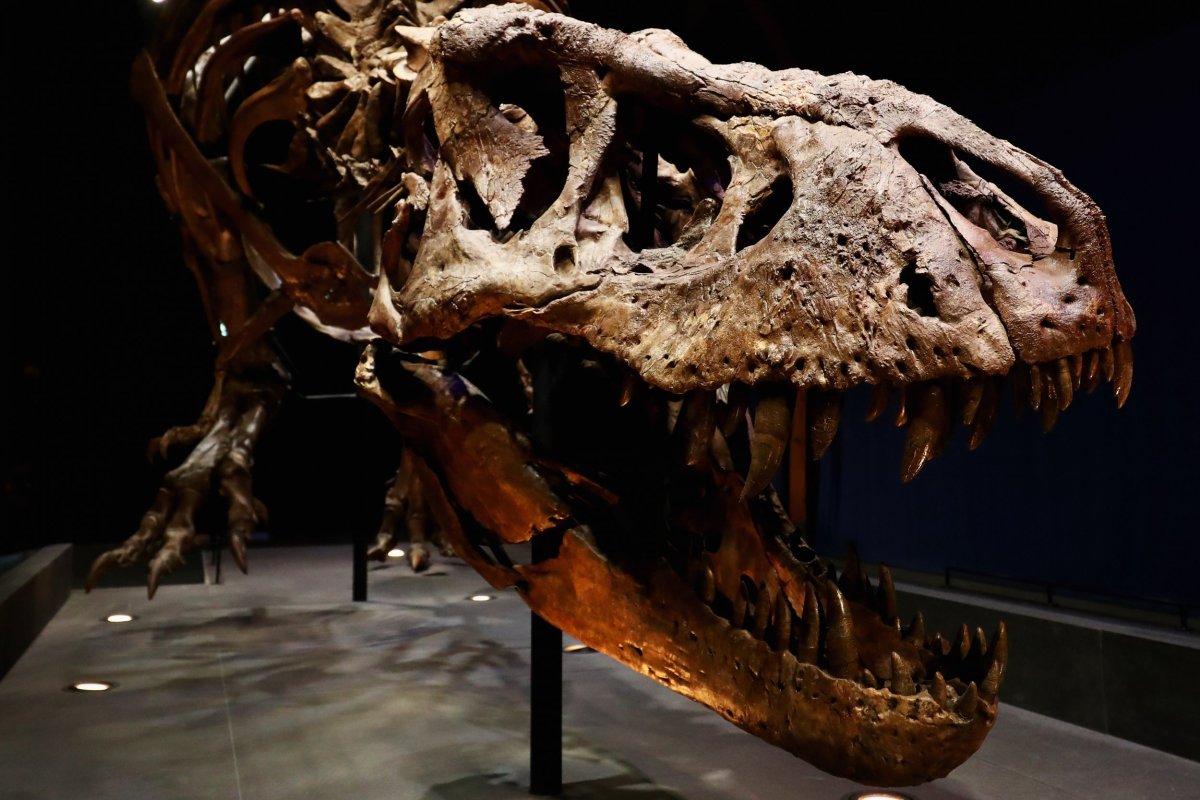
The dawn of the dinosaurs was triggered by huge volcanic eruptions that lasted for 200,000 years, scientists have discovered.
The Triassic–Jurassic extinction event 201 million years ago led to the extinction of at least half of all species living on Earth, including the giant crocodile-like animals and mammals that had previously ruled the world.
Although scientists know there was huge spike in carbon dioxide during this period, what actually triggered the mass extinction was unknown. Now, a team of researchers from the U.K. has taken a step toward solving the mystery.
Lawrence Percival, from Oxford University, and colleagues looked at the mercury levels in sediments from locations across four continents that were deposited at the same time as volcanic rock found in the Central Atlantic Magmatic Province (CAMP)—an area on the former supercontinent of Pangaea.
During volcanic eruptions, mercury is emitted in a gaseous form and is subsequently deposited in sediments.
Publishing their findings in the journal Proceedings of the National Academy of Sciences, the team found five of the six study locations (U.K., Austria, Argentina, Greenland, Canada and Morocco) showed pulses of elevated mercury concentrations that coincided with the end-Triassic extinction event.
The discovery of mercury spikes that date from the mass extinction, coupled with the previous discovery of a significant increase in carbon dioxide (also emitted during eruptions), strongly suggests that volcanism played a large role in the mass extinction event.
Percival tells Newsweek: "We know we have a rise in mercury, which we can link to volcanism, and it's happening at the same time as a rise in atmospheric carbon dioxide, so we can then say that this rise in carbon dioxide is almost certainly linked back to volcanism. This has been suggested before, but we now have a more global record of it."
Pangaea began to break apart around 175 million years ago. The volcanism recorded in the study appears to be part of this process—representing one of the first stages that would eventually lead to it being split up into what we see today.
Previous models of volcanism at CAMP indicated there were three huge volcanic pulses over the space of 700,000 years. This would involve lava covering an area hundreds of thousands of times bigger than Hawaii or Iceland, Percival says.
In the latest study, the scientists were able to constrain the timing of the first big pulse down to 200,000 years—and to show that it was not just one, huge eruption, but a constant series of smaller eruptions that would have meant carbon dioxide was constantly being fed into the atmosphere. And this, the team says, is important for how it would have affected the climate on Earth.
Instead of emitting all the volcanic gases—sulfur dioxide, carbon dioxide, and so forth—in one go, they were put out in discrete pulses. This would change the way plant and animal life responded: "You hit it once then before it can fully recover, you hit it again, and again," Percival says. "That can potentially have a very different impact on the climate and the longevity of the climate impact than just one big emission of gasses in one big go."

Pulses of volcanism would have created a disturbance to the atmospheric system that would have impacted ecological recovery, producing the mass extinction event. The clade to which dinosaurs belong survived and, with a new world order in check, it became the dominant group, ruling Earth for around 135 million years.
While the study does not directly look at the individual fauna and flora that made it through the end of the Triassic period, it does provide a clearer view of the environmental conditions at this time. "Understanding the volcanism going on at this time is a step towards helping the paleobiologists set their world view up when they're looking at the species that make it across the boundary and those that don't," says study co-author Tamsin Mather.
Scientists also say it also provides a new way of looking at other mass extinctions and examining the role volcanism might have played in them—including the one that killed off the dinosaurs.
"The big implication is that it allows us to understand this particular mass extinction to a far greater extent," Percival says. "It allows us to understand more where the emissions came from that caused the mass extinction, how they came into the atmosphere. It also helps us understand how emissions perturb the atmosphere and lead to a mass extinction, and the recovery thereafter—particularly in the context of what we're doing to the atmosphere today."